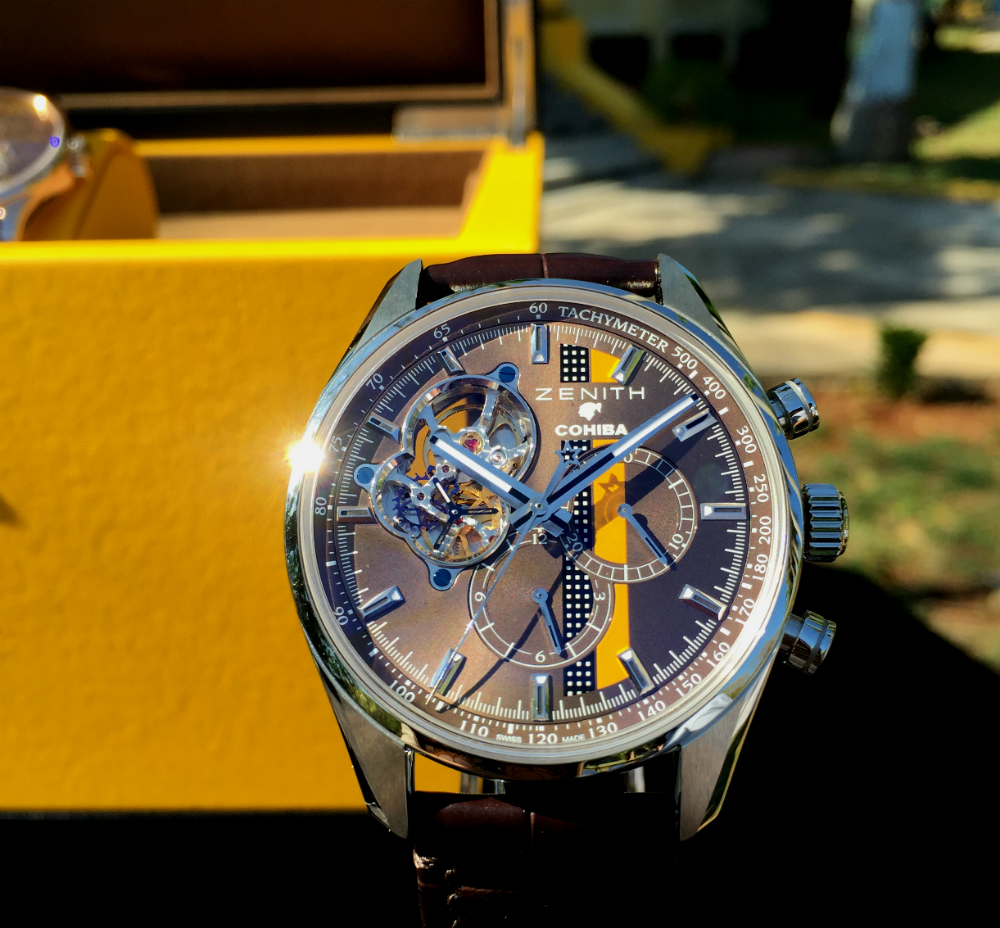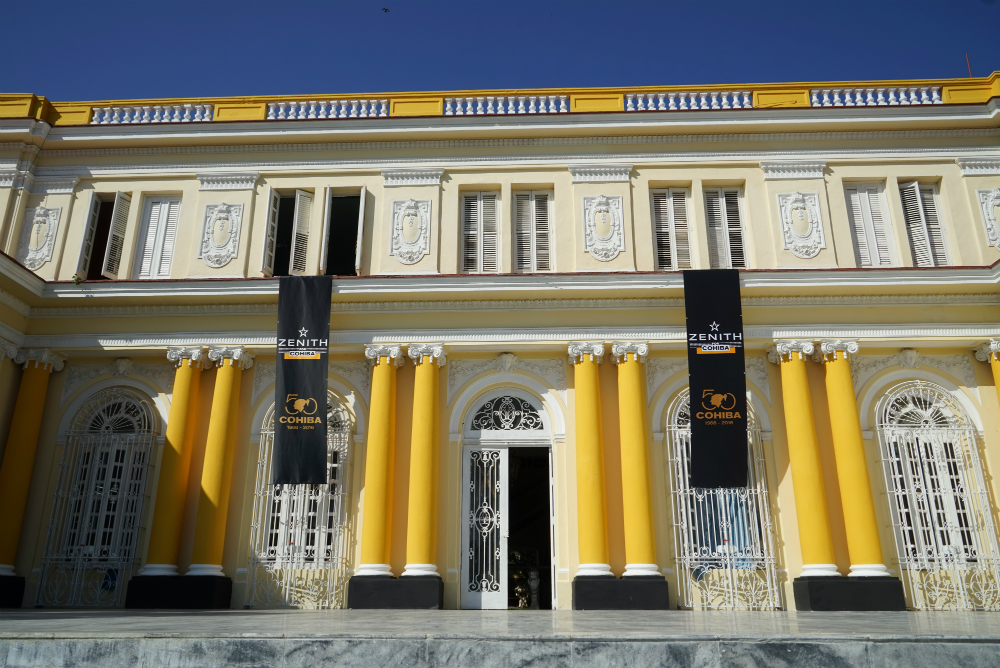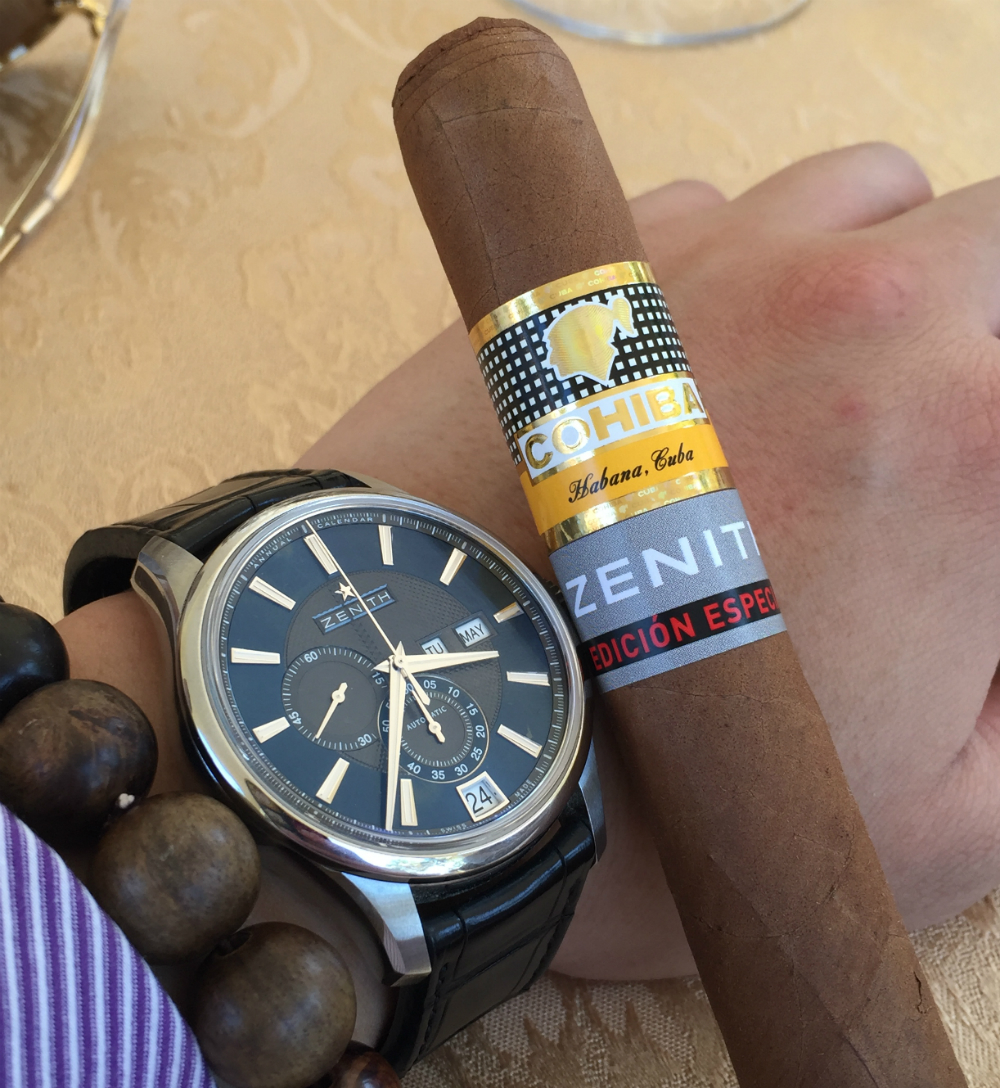 Alfred: I’m just asking this question because, as media, I think it’s important for me to explain this to our readers. There are plenty of new brands out there which we call independent. They do not have the history of Zenith, and it makes people wonder whether the watch can be restored and whether the brand will still be around after a few years.
Alfred: I’m just asking this question because, as media, I think it’s important for me to explain this to our readers. There are plenty of new brands out there which we call independent. They do not have the history of Zenith, and it makes people wonder whether the watch can be restored and whether the brand will still be around after a few years.
Aldo Magada: That’s a valuable question. A lot of independents are doing great pieces, but when you have spent so much money on a beautiful timepiece, you must consider what will happen in 10 years. It could be a one-man operation, or a brand established in, say, 1845 but that for some reason stopped operation for more than a century, and has now come back. What do you do with the vintage pieces? Don’t forget that Zenith is one of the few brands, which has been in business continually for over 150 years. So basically, we know what we did for the last century-and-a-half. And it’s a big responsibility, I agree with you, it’s part of the value of the product. If you cannot repair, it leaves a big question.
Alfred: The next question I’d like to ask is more specific. Elite and El Primero: in your interpretation, what’s so special about these 2 movements. Especially the Elite, as well.
Aldo Magada: Well, El Primero, I don’t have to tell you about because this is the only high frequency chronograph on the market. Of course, a lot of brands had limited series of 1000 pieces or so, but we have been producing them since 47 years ago. This chrono is not just aesthetically beautiful, but don’t forget that when you are a manufacturer, you also always try to have something new. It’s 6.9mm, very thin, very refined. As a manufacturer, though, we would always like to add something new on top of it. Elite is comparable to the ETA movement, more or less sharing the same dimensions. And it was an ETA for us, as a three-hand independent movement. It’s a good movement in terms of performance, outperforming the ETA 2892. It also outperforms, of course, the ETA 2000, which is maybe a comparable product because of its size. But what is important is we put at least the same care into the Elite that we put into the El Primero, and that has to do with the finishing. It’s really a manufacture movement. So at the price of the regular industrial movement range, I would say you would have no complaint about it.
Alfred: I believe that in the current market, people are looking for value for money. And for me, I think Zenith represents for one of these brands watch lovers would be looking at for something other than ETA. How about any other haute horology pieces that you have done? I understand that you also have the tourbillon watches, of course.
Aldo Magada: Yes, we have the tourbillon on the El Primero chronograph. This movement has been around for a long time. The price of the watch is about CHF49,000, so of course it’s a lot of money, but if you compare with the tourbillons of other manufacturers, it’s very affordable. The tourbillon is one thing, but we also have the zero gravity that is not compensating the gravity on the escapement, but eliminating its effect because the escapement always stays on the same level. And that, for us, is a good way to define Zenith. It’s a unique answer to very old and common questions about this gravity problem. It’s very simple in terms of concept, and it’s very complicated in terms of how you do it. And that’s exactly what we love at Zenith. It has to be an elegant solution: simple in the concept, very sophisticated to accomplish.

Alfred: It’s very sophisticated in a way. Tourbillons these days are more for showing artistic decoration of the movement itself rather than the compensating the gravitational force. (Aldo Magada: Yes, it an animation, because it’s turning). But for the Christophe Colomb watch, you have a real solution.
Aldo Magada: It is a solution. It’s also a fun way to play with your watch. You become addicted to making sure that in every position of the watch, the escapement is still in the same position. I tried everything – I can show you. Fortunately, it works.
Alfred: On your collaboration with Cohiba, could you tell us again, for our readers, how it happened? And what’s so special about this dial that you have on the Christophe Colomb watch?
Aldo Magada: It started with an email and then a meeting with a great guy named Javier. At that time, I didn’t know it was for Cohiba, I didn’t know it was the 50th anniversary for Cohiba. So when I discovered that, I was not only thrilled because Cohiba is a flagship brand of the Cuban cigar, but it is also an incredible association for us – not only for marketing reasons. Cohiba is a brand that stands for excellence, and that is exactly what we try to achieve with our movements, with our watches. Now, about the dial, the problem when you do co-branding is that you have to be very careful on this kind of price positioning not to make a merchandising product because if you do a little bit too much merchandising, it will lose total value. When we do this co-branding, we not only think of this watch as for the celebration of Cohiba’s 50th anniversary, but it has to be a product you will wear in 5 years. For the dial, as a partner, we have to incorporate the Cohiba brand graphics always with a position at center stage. So That’s why we created this dial for Cohiba. It reminds one of the ring of the cigar, and of course the color evokes the color of tobacco when it’s fermented. The globe look is still classy, so you will not be ashamed to wear this watch in 5 years, because it looks good. That’s why we did this kind of dial.
Alfred: Speaking of trends in 5 years, obviously even within LVMH brands, there are smart watches coming into play in the market. How do you see the smart watch market compared to a brand like Zenith?
Aldo Magada: Well, basically, we have been doing smart watches for 150 years. But we are doing it in a mechanical and analog way! For the connected watch, we have the chance to have our sister company TAG doing an absolutely fantastic connected watch and harnessing the unique power of Mr. Biver in communication. And now, my question is: is today’s connected watch market the market of the future? Because we asked ourselves a lot when the Apple watch came out. I bought an Apple Watch because I’m an Apple fan, and after 3 days I stopped wearing it because I didn’t see what benefit it provides to have what you can have on your phone on your watch. A lot of people can forget about this and go for Fitbits because they need to know their health-related statistics. I think the development of connected watches will go tremendously in a different direction when the device is totally independent from the phone. And I will say that it will probably be a great tool to use. Now, the question is when and how we will do it.

